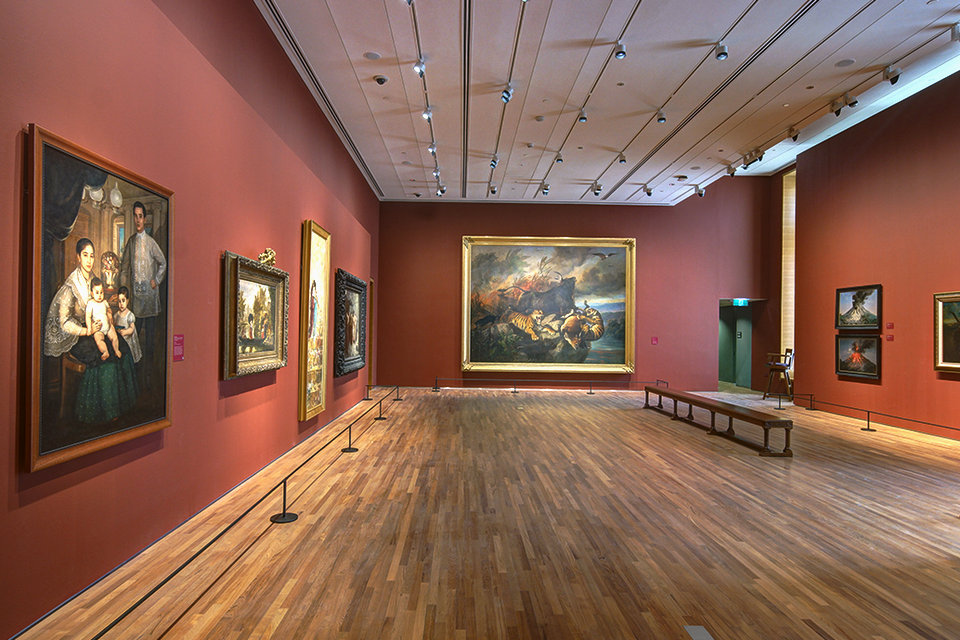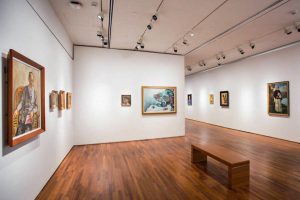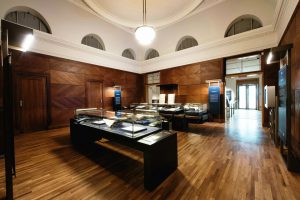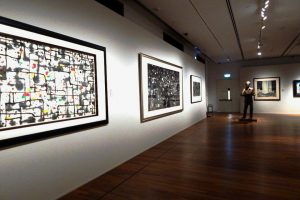Imagining Country and Self (1900s to 1940s): In the early 20th century, the growth of art schools and institutions led artists to develop a stronger sense of professional identity. Artists began to express a stronger sense of place in their works and actively strove to express their newfound identity through innovative forms. Imagining Country and Self exhibition in the UOB Southeast Asia Galleries 2 – 5 (on level 3).
By the 1920s, the consolidation of colonial rule by the Dutch, British, French and Americans was complete for most parts of Southeast Asia. The opening of the Suez Canal in 1870 had a major impact in boosting commerce and travel on a global scale after World War I. The time needed to travel from Europe to the Dutch East Indies was shortened from three months to six weeks. In the 1920s, new steamboat tourist routes were launched, drastically shortening travel time and generating a greater sense of proximity for those travelling to the region.
The concept of nationalism spread throughout Southeast Asia during the early 20th century together with a greater sense of identity and place, and local and expatriate artists offered up nostalgic homages to the land and its heritage. Many produced landscapes, often suffused with golden light: two particularly bucolic examples at the Gallery are by Indonesian painters Leo Eland and Wakidi, whose respective works Landscape of Java (1929) and Ngarai Sianok(c.1940s) are idealistic portrayals of Javanese mountains and rice paddies.
Colorful village marketplace pastiches were another common theme, distinguished by rich, detailed palettes and congenial characters in local dress. One such work in the Gallery is Market at Marmot (1940) by French painter Louis Rollet. Perhaps more intriguing is the elegant Balinesische Legende (Balinese Legend) (1929), a Rousseau-like exploration of Indonesian myth by German painter Walter Spies.
As European art schools came to be established in cities like Hanoi and Bangkok in the 1940s, local artists sought to instill their work with an individual style. One of the half-dozen or so such sculptures within the Gallery’s “Imagining Country” section is Musical Rhythm (1949), a graceful bronze-work of a seated flutist, for which Thai artist Khien Yimsiri infused his country’s ancient sculptural traditions with modern gesture. Also on view is Panorama de Cho Bo (Panorama of Cho Bo) (1943) by Vietnam’s Nguyen Van Ty, an early student of lacquer painting, is a three-panel, red-and-gold lacquer screen depicting a stylized landscape.
Between Declarations and Dreams: Art of Southeast Asia since the 19th Century
What defines Southeast Asia and its art? From historical artefacts to contemporary perceptions of such objects, “Between Declarations and Dreams” traces the circuitous route of the region’s art, from its connection to 19th-century colonialism to its current reformulations of heritage, aesthetics and identity. The artistic journey through these galleries is a beautifully articulated progression, and the collection here establishes a lucid and distinctive framework for the Gallery’s fundamental aim: to advance the scholarly discourse on the history of Southeast Asian art. Given its detailed historical analyses and eclectic visual palette, “Between Declarations and Dreams” may best be savored over multiple visits.
Housed in the former Supreme Court building, the UOB Southeast Asia Gallery presents over 300 artworks that trace the shared artistic impulses across Southeast Asia. The UOB Southeast Asia Gallery, cultivate a deeper appreciation of Southeast Asia’s rich history and heritage and of developed as a region.
Starting in the mid-19th century, the exhibition navigates the art history of Southeast Asia as one that is characterised by a continuous encounter with the new as the regions artists negotiated the meaning of art and sought to reinvent vernacular expressions and aesthetics. Presented in a largely chronological sequence and punctuated by key turning points in artistic sensibilities, the exhibition also identifies how art is inseparably linked to the region’s tumultuous social and political history.
The title of the exhibition is credited to one of Indonesia’s most cherished poets, Chairil Anwar. In his poem of 1948, “Krawang-Bekasi”, Chairil Anwar laments the massacre of villagers in West Java by the Dutch colonial forces, giving vent to the desire for national independence at the time. This line may also be said to encapsulate the experiences of many artists in the region, caught as they are between declarations and dreams, the personal and the political.
The curatorial narrative explores four main themes places in a broadly chronological sequence, each one critically examining the shared artistic impulse of the region for each period: Authority and Anxiety, Imagining Country and Self, Manifesting the Nation, and Re:Defining Art.
This exhibition contains some artworks with potentially sensitive imagery. Visitor discretion is advised.
National Gallery Singapore
National Gallery Singapore is a leading visual arts institution which oversees the world’s largest public collection of Singapore and Southeast Asian modern art. Situated at the birthplace of modern Singapore, in the heart of the Civic District, the Gallery is housed in two national monuments – City Hall and former Supreme Court – that have been beautifully restored and transformed into this exciting 64,000 square metres venue. Reflecting Singapore’s unique heritage and geographical location, the Gallery aims to be a progressive museum that creates dialogues between the art of Singapore, Southeast Asia and the world to foster and inspire a creative and inclusive society. This is reflected in our collaborative research, education, long-term and special exhibitions, and innovative programming. The Gallery also works with international museums such as Centre Pompidou, Musée d’Orsay, Tate Britain, National Museum of Modern Art, Tokyo (MOMAT) and National Museum of Modern and Contemporary Art, Korea (MMCA), to jointly present Southeast Asian art in the global context, positioning Singapore as a key node in the global visual arts scene.
National Gallery Singapore oversees the world’s leading public collection of modern art from Singapore and Southeast Asia. It comprises over 8,000 works from the 19th and 20th centuries in all media, including painting, sculpture, printmaking, photography and video.
Aiming to be the centre for research, discussion and publication on the modern art of the region, the Gallery offers wide access and fresh understanding of our unique visual art heritage.
With its comprehensive collection, the Gallery presents the development of Singapore and regional cultures to tell their social, economic and political histories. The Gallery looks beyond national and regional boundaries of art to include a wider ambit of international visual arts culture, research into Asian heritage and cultural affiliations, and engage with global cultures and discourses.











